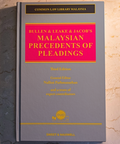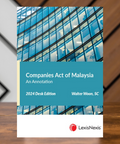![Kaedah-Kaedah Mahkamah 2012 [PU(A) 205/2012] (Hingga 15hb Jun 2024)](http://www.joshualegalartgallery.com/cdn/shop/files/Template_Act_new_16.png?v=1727318128&width=480)
![Kaedah-Kaedah Mahkamah 2012 [PU(A) 205/2012] (Hingga 15hb Jun 2024)](http://www.joshualegalartgallery.com/cdn/shop/files/Kaedah_Mahkamah_2024.jpg?v=1727318120&width=480)
![Kaedah-Kaedah Mahkamah 2012 [PU(A) 205/2012] (Hingga 15hb Jun 2024)](http://www.joshualegalartgallery.com/cdn/shop/files/Kaedah_Mahkamah_2024_1.jpg?v=1727318120&width=480)
![Kaedah-Kaedah Mahkamah 2012 [PU(A) 205/2012] (Hingga 15hb Jun 2024)](http://www.joshualegalartgallery.com/cdn/shop/files/cup_70bdb654-471b-4907-a74a-fed769c7b46e.jpg?v=1702275270&width=480)
![Kaedah-Kaedah Mahkamah 2012 [PU(A) 205/2012] (Hingga 15hb Jun 2024)](http://www.joshualegalartgallery.com/cdn/shop/products/shipping_07c68865-7f1b-4abc-9fd8-9c5ae206f6c4.jpg?v=1702275270&width=480)
Kaedah-Kaedah Mahkamah 2012 [PU(A) 205/2012] (Hingga 15hb Jun 2024)
Kaedah-Kaedah Mahkamah 2012
[PU(A) 205/2012]
(Hingga 15hb Jun 2024)
Detailed Contents Of Kaedah-Kaedah Mahkamah 2012 [PU(A) 205/2012] :
The Kaedah-Kaedah Mahkamah 2012 [PU(A) 205/2012] is a set of rules and regulations governing the procedures and processes of courts in Malaysia. These rules were promulgated under the powers conferred by Section 74 of the Courts of Judicature Act 1964 (Act 91). The Kaedah-Kaedah Mahkamah 2012 replaced the earlier Kaedah-Kaedah Mahkamah 1980.
The Kaedah-Kaedah Mahkamah 2012 consists of 687 rules divided into 18 parts. The following is a brief explanation of each part:
Part I: Preliminary
This part contains definitions of terms used in the rules and provides a framework for the interpretation of the rules.
Part II: Jurisdiction and Commencement of Proceedings
This part deals with the jurisdiction of the courts and the commencement of proceedings, including the forms that must be used for different types of proceedings.
Part III: Service of Documents
This part deals with the service of documents, including how documents must be served, who can serve them, and how to deal with documents that cannot be served.
Part IV: Appearance and Advocates
This part deals with the appearance of parties in court and the role of advocates. It includes rules on who can appear in court, how they must appear, and the duties of advocates.
Part V: Proceedings in General
This part deals with the general procedures that must be followed in court proceedings, including the filing of documents, time limits, and the conduct of hearings.
Part VI: Summary Judgment
This part deals with the process of summary judgment, which allows a court to make a judgment without a full trial if it is satisfied that the case has no merit.
Part VII: Default Judgment
This part deals with the process of default judgment, which allows a court to make a judgment against a party who fails to appear or respond to a claim.
Part VIII: Third Party Proceedings
This part deals with third-party proceedings, which allow a party to bring in a third party who may be liable for some or all of the claims in the original proceedings.
Part IX: Counterclaims and Set-Off
This part deals with counterclaims and set-offs, which allow a party to bring a claim against another party or set off a claim against a debt owed to them.
Part X: Interpleader
This part deals with interpleader proceedings, which allow a person who is holding property to ask the court to determine the rightful owner of that property.
Part XI: Discovery and Inspection
This part deals with the process of discovery and inspection, which allows parties to obtain information and evidence from each other in order to build their case.
Part XII: Witnesses
This part deals with the process of calling and examining witnesses in court proceedings.
Part XIII: Experts
This part deals with the use of expert witnesses in court proceedings, including their appointment and the rules governing their testimony.
Part XIV: Judgments, Orders and Decrees
This part deals with the types of judgments, orders, and decrees that can be made by the court, including the procedures for making and enforcing them.
Part XV: Costs
This part deals with the issue of costs, including the costs that can be awarded to the winning party and how they are calculated.
Part XVI: Appeals
This part deals with the appeals process, including the procedures for filing an appeal and the powers of the appellate courts.
Part XVII: Miscellaneous
This part deals with miscellaneous issues not covered elsewhere in the rules.
Part XVIII: Transitional and Savings
This part deals with transitional arrangements and savings provisions in relation to the implementation of the Kaedah-Kaedah Mahkamah 2012.
Find more statutes like Kaedah-Kaedah Mahkamah 2012: Statutes


































